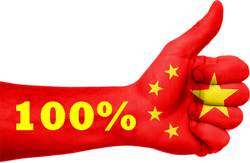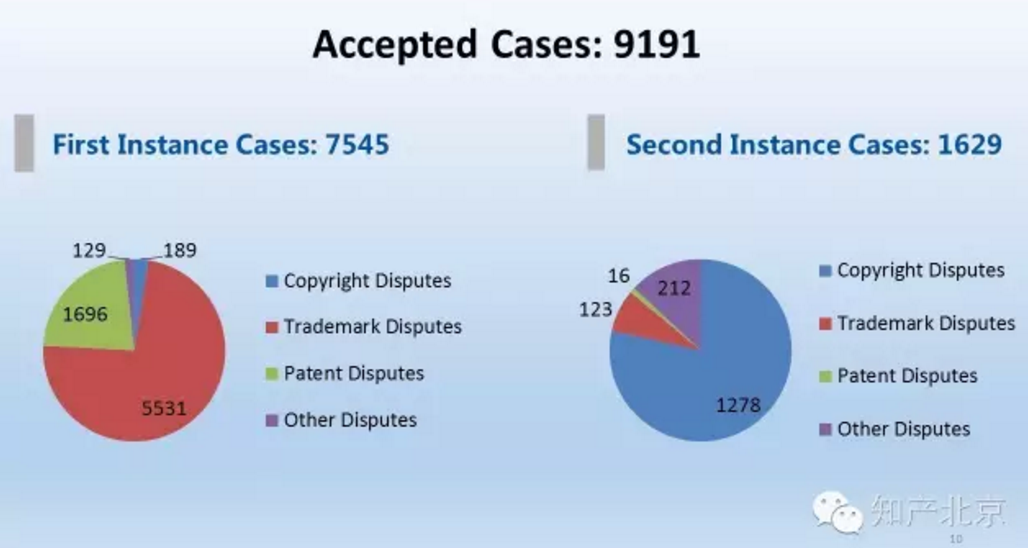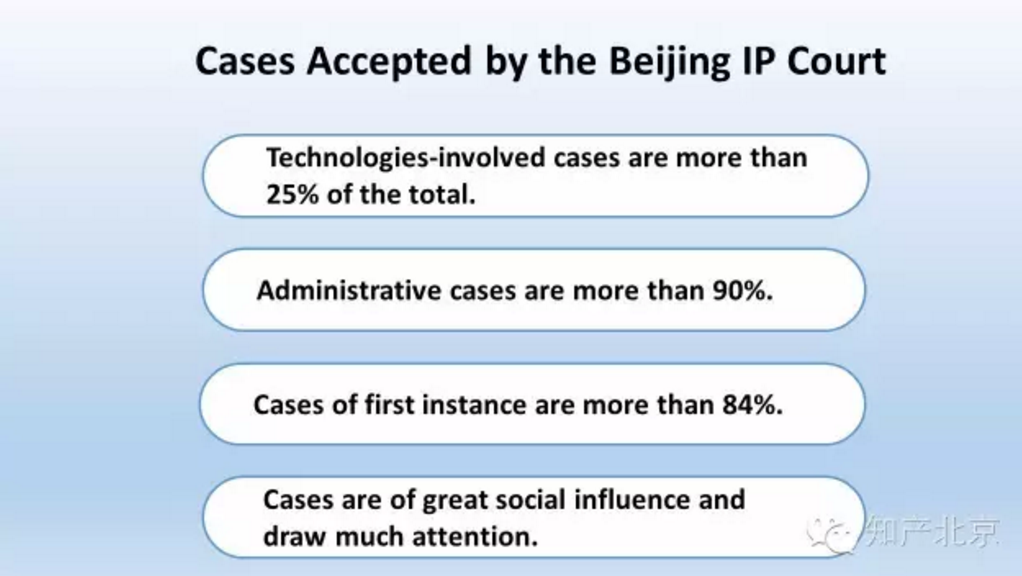 As reported by IAM, Judge Gang Feng of the Beijing Intellectual Property Court provided an update on the IP Courts in China in a presentation given June 2, 2016. Perhaps most interestingly, he stated that of 63 first instance (i.e., trial level/non-appellate) civil litigations with foreign plaintiffs, the winning percentage was 100%. All 63 of these foreigner-filed cases were won! This compares to an overall winning percentage at first instance of 72.3% Although the number of patent cases among these were not stated, most were likely patent cases due to the court's first instance jurisdiction.  There are three IP Courts in China, one each in Beijing, Shanghai and Guangzhou. The Beijing Intellectual Property Court was established in November 6, 2014 for trying IP-related cases on both first instance and second instance level (there are trial and appellate levels, respectively). The IP Courts may hear the following cases:
He then provided several statistics regarding the Beijing IP Court for 2015:
Judge Gang classified the cases accepted by the Beijing IP Court into four chief classes: In 2015, the Court concluded 5,432 cases, with each judge concluding 209 cases on average. Of these, 3,934 were first instance cases, including 59 copyright disputes, 3,245 trademark disputes, 597 patent disputes and 33 other disputes. 1,485 were second instance cases, including 1,196 copyright disputes, 98 trademark disputes, 14 patent disputes and 177 other disputes. Judge Gang concluded 244 cases himself. The highest amount of cases concluded by a single judge was 279.
Judge Gang then mentioned that foreign-related IP cases have three principles:
In summary, Judge Gang essentially rolled out the red carpet for foreigners to file IP cases in China. This is consistent with my observations that the judges and courts have been directed to help create the world's best IP enforcement system, and that they have responded very quickly. Although the system is not perfect as is no system of enforcement, China has created an excellent system of patent enforcement to which the world should pay attention and respect. If it is not already, China will soon be the best place worldwide to file patent litigations. 11/9/2023 05:44:09 pm
Great post, much appreciate the time you took to write this.
Reply
Leave a Reply. |
Welcome to the China Patent Blog by Erick Robinson. Erick Robinson's China Patent Blog discusses China's patent system and China's surprisingly effective procedures for enforcing patents. China is leading the world in growth in many areas. Patents are among them. So come along with Erick Robinson while he provides a map to the complicated and mysterious world of patents and patent litigation in China.
AuthorErick Robinson is an experienced American trial lawyer and U.S. patent attorney formerly based in Beijing and now based in Texas. He is a Patent Litigation Partner and Co-Chair of the Intellectual Property Practice at Spencer Fane LLP, where he manages patent litigation, licensing, and prosecution in China and the US. Categories
All
Archives
February 2021
Disclaimer: The ideas and opinions at ChinaPatentBlog.com are my own as of the time of posting, have not been vetted with my firm or its clients, and do not necessarily represent the positions of the firm, its lawyers, or any of its clients. None of these posts is intended as legal advice and if you need a lawyer, you should hire one. Nothing in this blog creates an attorney-client relationship. If you make a comment on the post, the comment will become public and beyond your control to change or remove it. |






 RSS Feed
RSS Feed